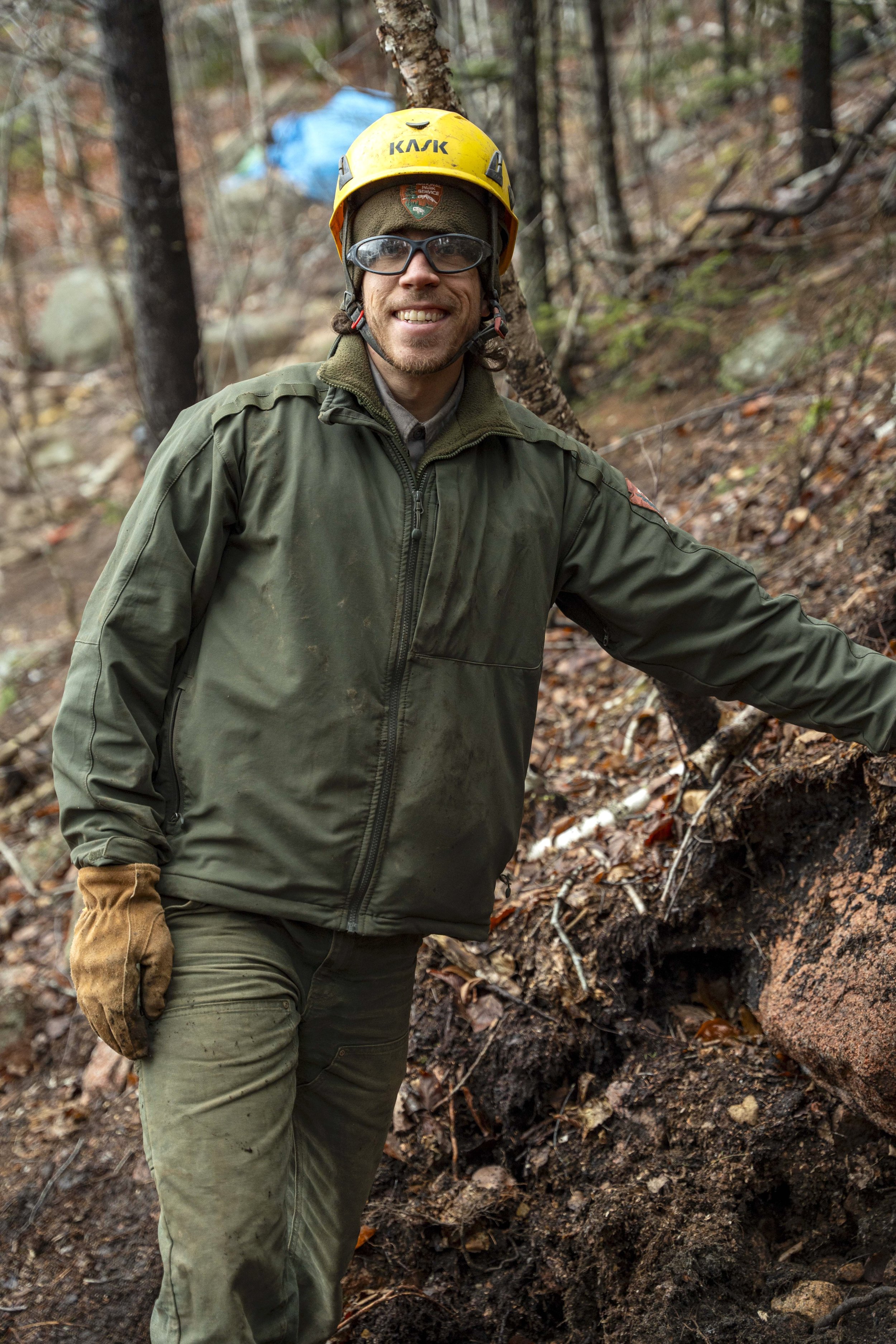




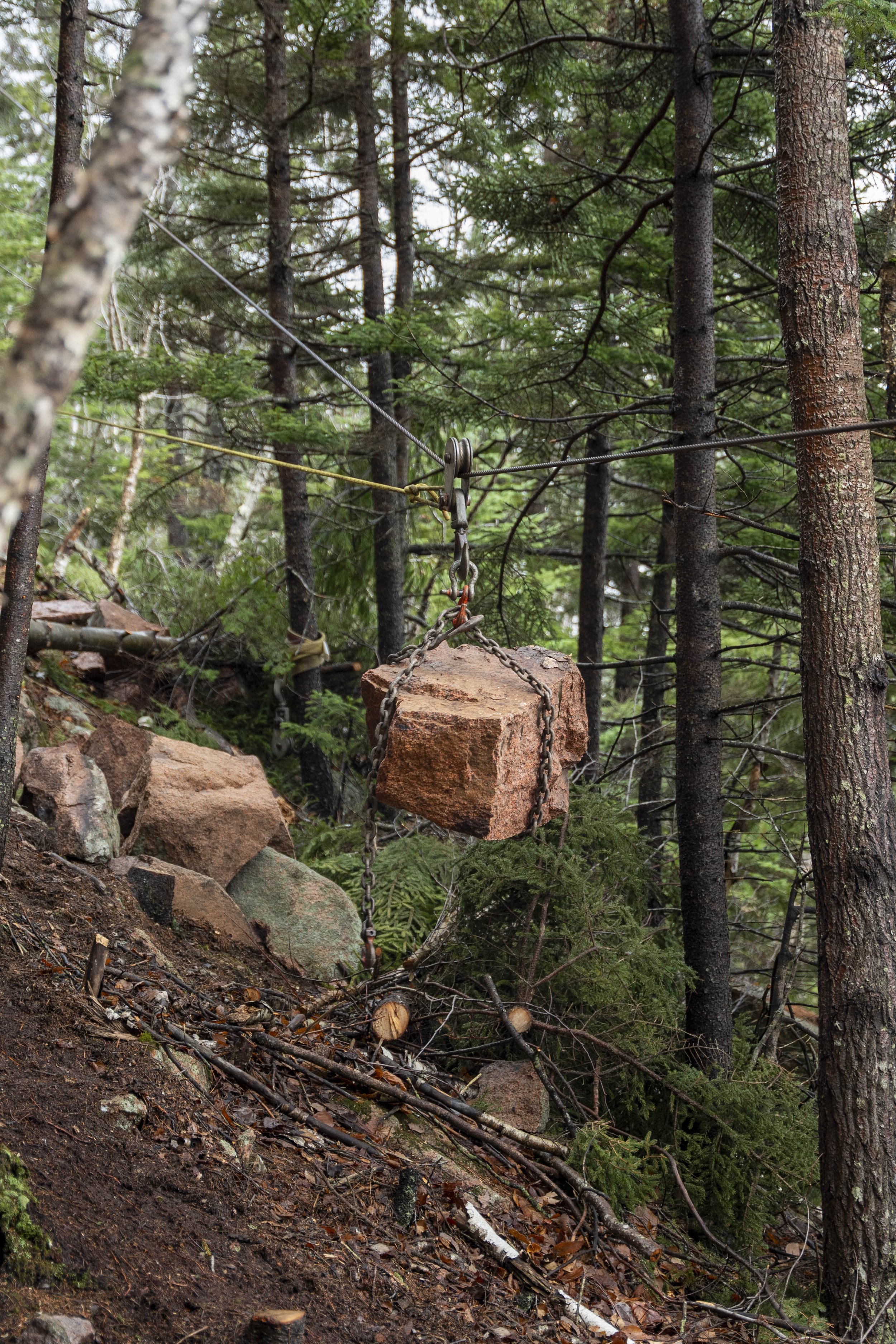
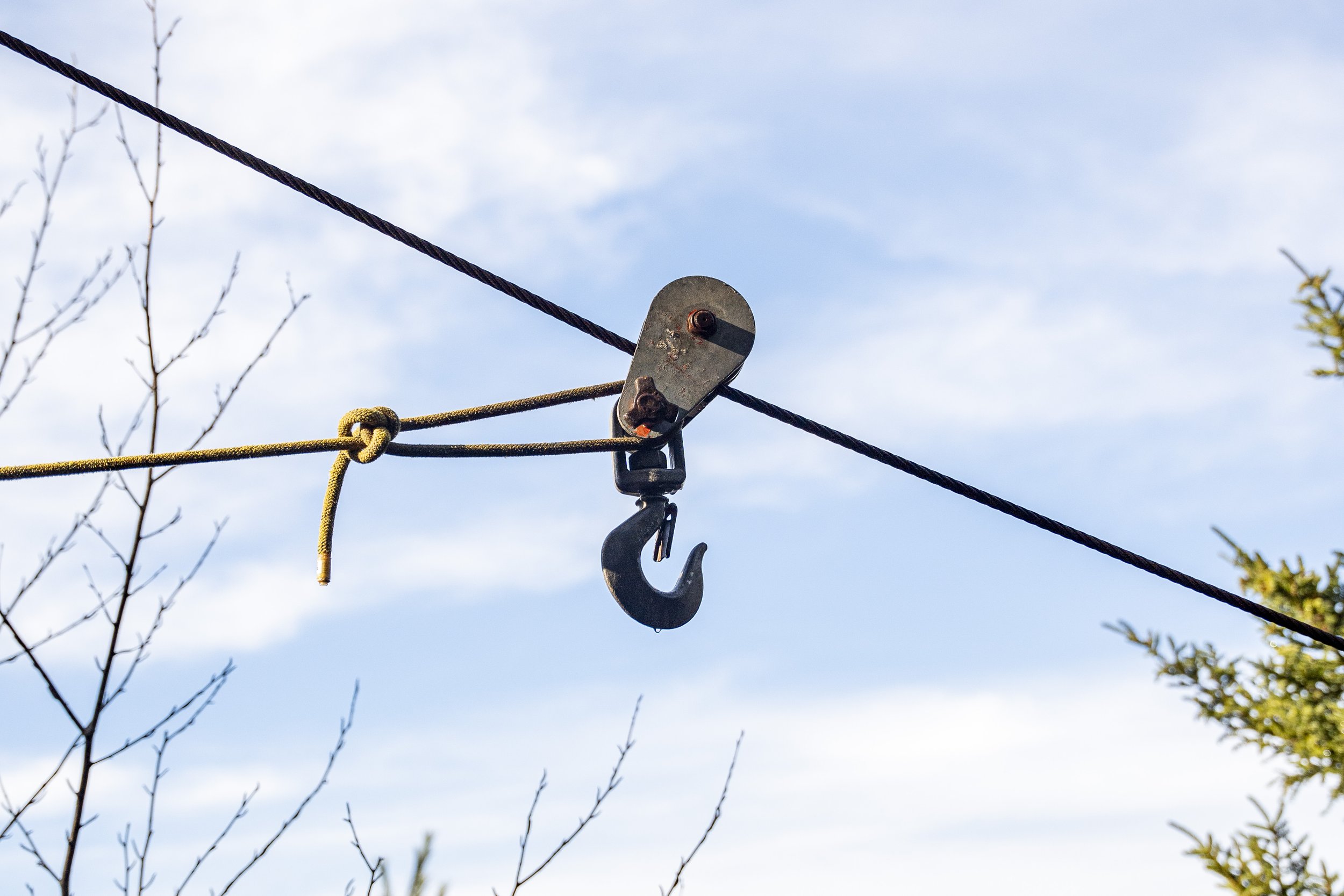
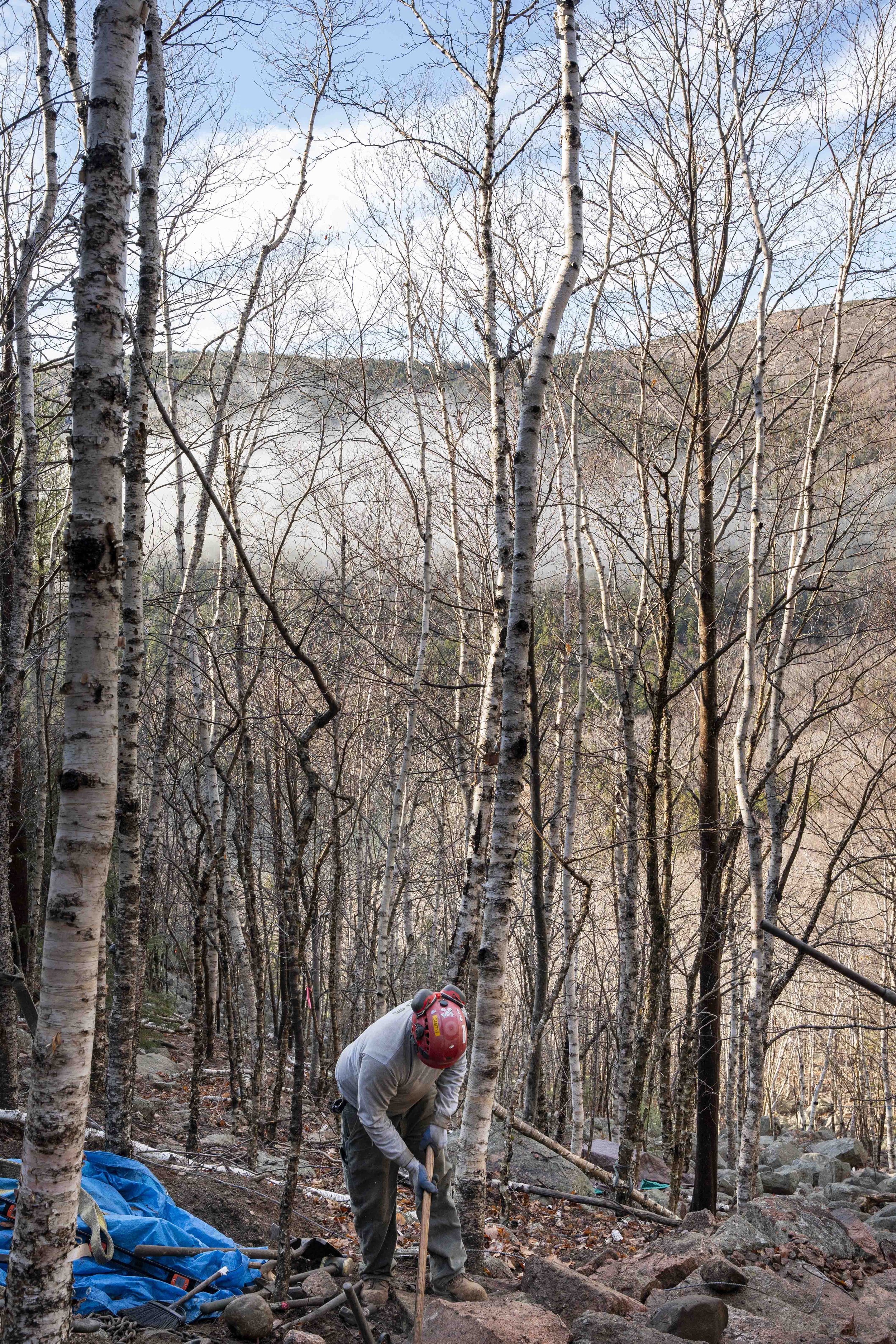




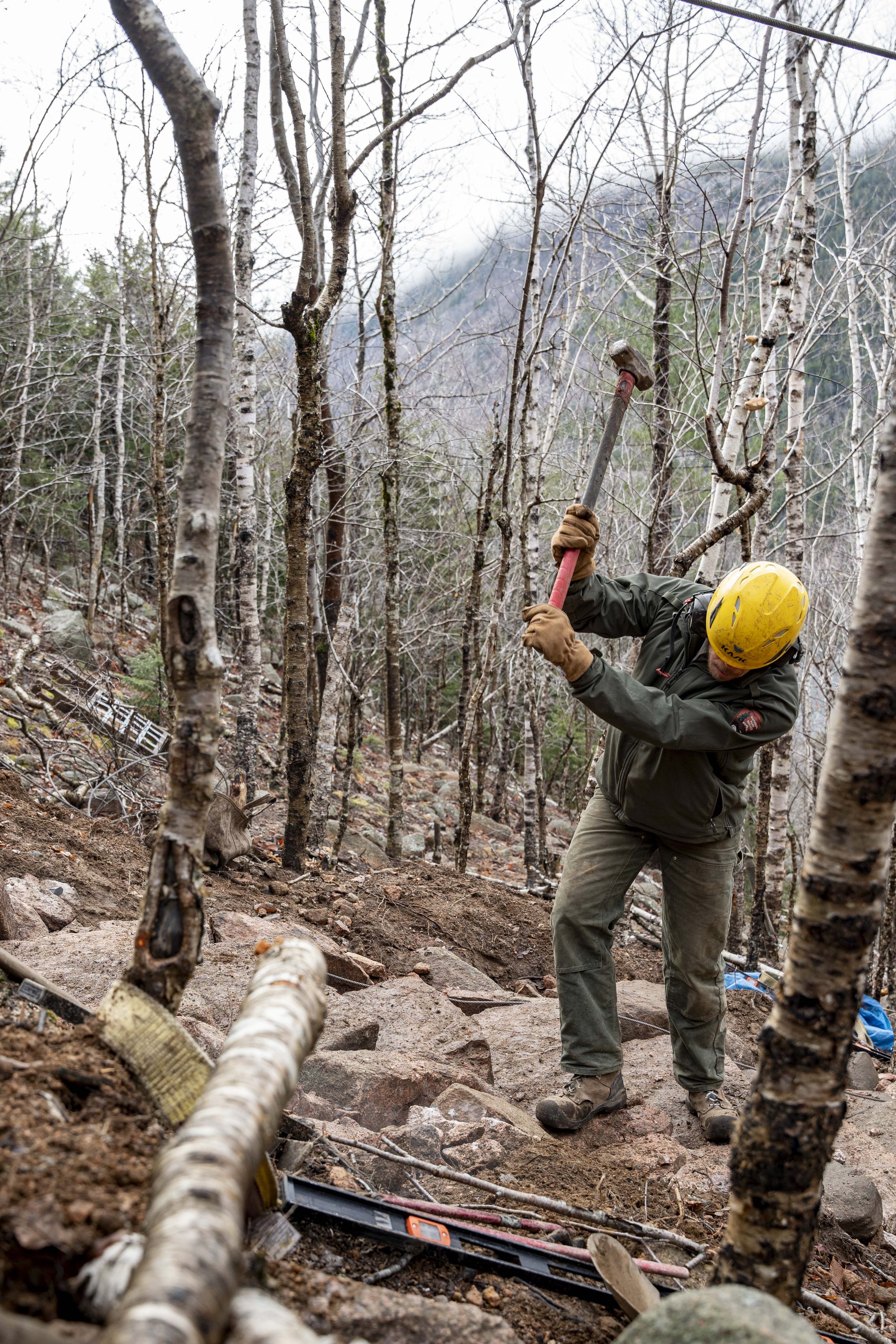
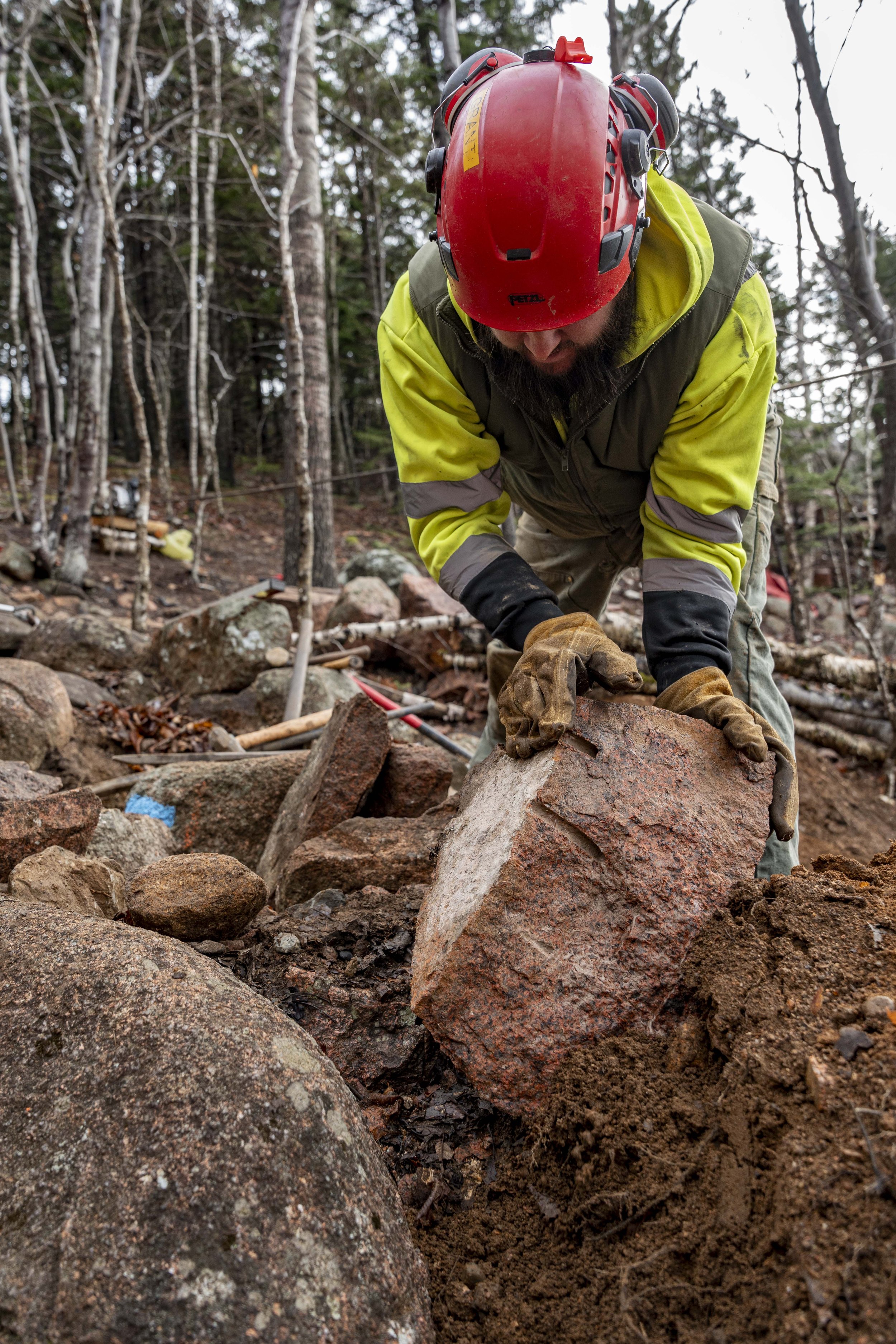

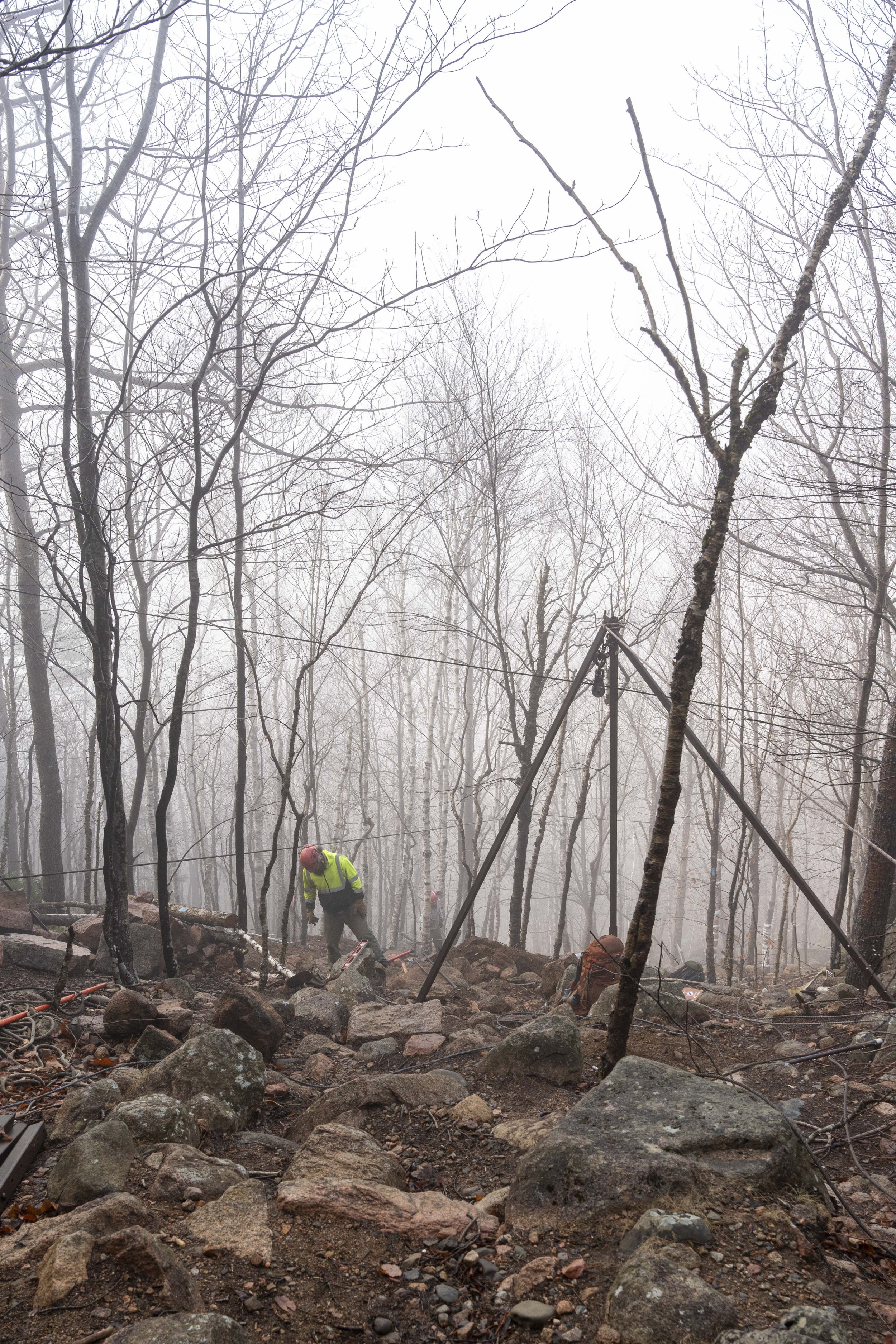




Trail Work: The Blood, Sweat and Backbone of Outdoor Recreation
Imagine you’re hiking up a trail in Acadia National Park. You’re about three miles into the woods, your heart rate is up, you’re getting tired of hoisting yourself over giant boulders, and you’re looking forward to the summit. Suddenly, your stride breaks as you see someone standing ahead wearing a yellow hardhat, green and grey clothing, and covered head-to-toe in dirt. They instruct you to stop, and your eyes catch the iconic arrowhead patch on their sleeve—a hallmark of public lands, complete with its distinctive bison emblem.
Voices echo from the woods, and you notice a network of wire cables strung between the trees. A shiny 10 foot aluminum ladder is laying off to the side of the trail. Was all of this equipment carried up here? "UP!" a voice shouts, and the zipline-like cable above you begins to move. Suddenly, a boulder the size of a reclining chair swings into view, dangling from a rusty chain 12 feet in the air. Crew members shout instructions as they carefully guide the massive rock into place. Another worker, previously hidden from view, turns on a motored wench for a brief moment, shifting the boulder slightly to the right. "HOLD!" shouts the lead crew member. "DOWN!" With controlled precision, the rock is lowered into its new resting place, perfectly situated in the middle of the trail. This intricate dance of cables, ropes, and boulders is how Acadia’s trail crew builds historically accurate steps to withstand record breaking rainfall.
How often do you hike a trail and consider the effort behind its creation? Most don’t realize the ingenuity and labor required to build trails that endure the forces of nature—diverting water, preventing erosion, and protecting fragile ecosystems while guiding hikers safely. For trail crew members, hauling 60-pound logs up steep terrain isn’t just hard work; it’s a physical and mental challenge driven by a mission to combat the impacts of climate change. From erosion caused by heavier rainfall to runoff threatening nearby habitats, their efforts ensure these trails remain accessible and sustainable for generations to come.

